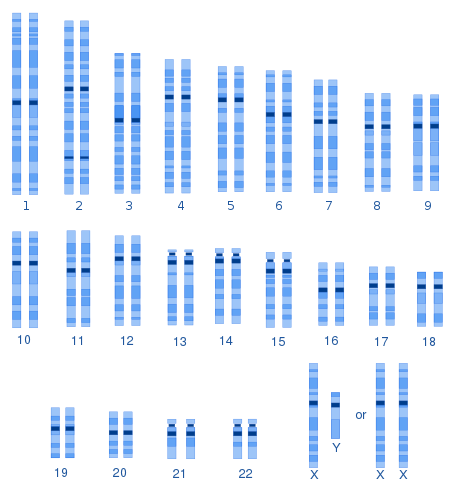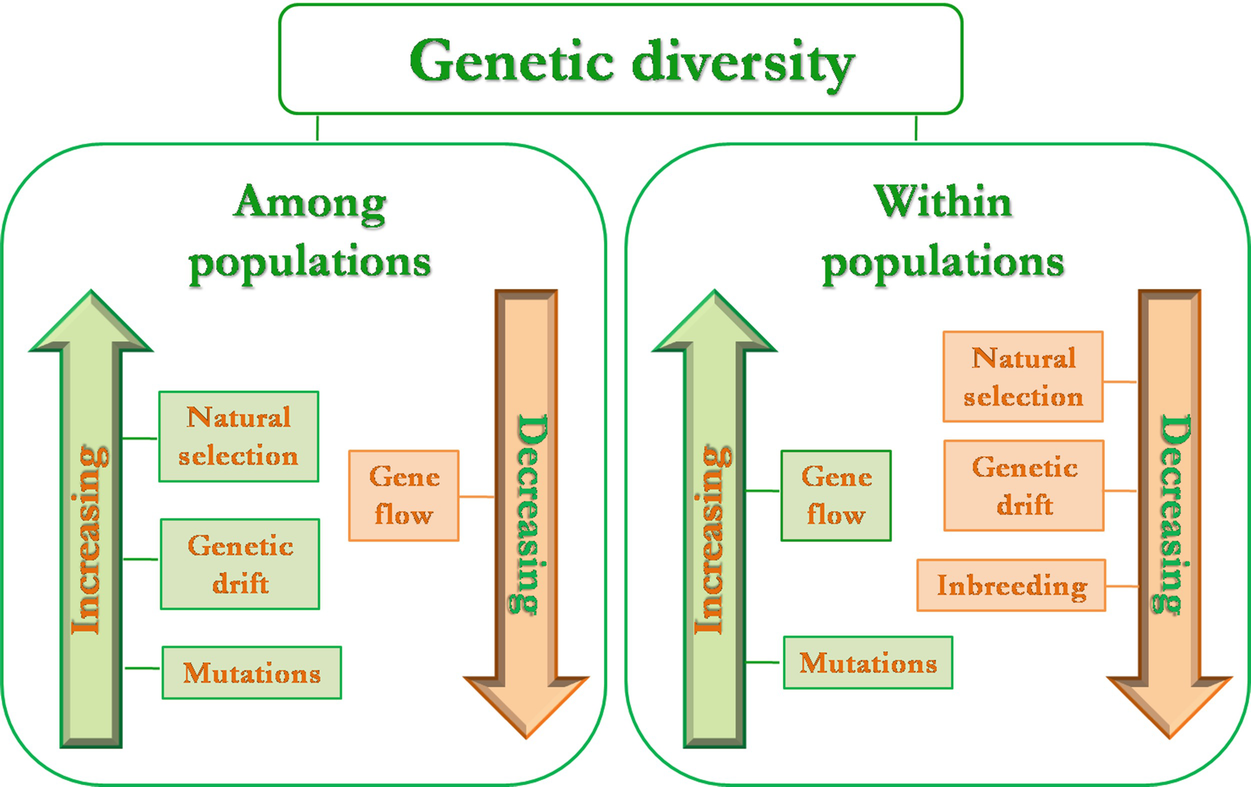Genetic Variation and the Life Cycle Study Guide
Check out awesome, educational VR rooms on Inspirit’s mobile app (available for iOS and Android devices)🤩
Introduction:
Have you ever wondered why your friends don’t have the same face shape as you? or,
- Why do they have different body sizes?
- Why is their body complexion different?
- Why do they speak louder or slower than you?
Well, everything happens because of genetic variations. It is the difference in DNA among different individuals, resulting in mutation and genetic recombination.
What is genetic variation?
Variations in the DNA sequence in each of our genomes that make us different from other living beings of the same species are genetic variations.
- Genomes are responsible for carrying our body genes that store crucial hereditary information.
- All the individuals that belong to the same species usually have the same characteristics, but they’re barely identical. Genetic variation is responsible for it.
- The definition of variations in biology is the difference found among any two cells or organisms from the same species, which results from either a change in the basic unit of life or the impact of environmental constituents on the composition of the genes.
Hopefully, you now know what genetic variations are. But do you know what is the ultimate source of genetic variation and the basis for the diversity of life on the earth?
The mutation is the ultimate source of genetic variation, and evolution is the basis for the diversity of life on earth. Let’s discuss the other sources of genetic variation and the meaning of evolution.
Sources of genetic variation
Genetic variations in species can happen from very few sources. Mutations are the prominent source. However, gene flow and sexual reproduction also result in genetic variation.
Mutations
Mutation happens when an alteration takes place within a specific sequence generally found among genes in the DNA of a species. Through mutation, new alleles (variants of genes) come into existence.
Gene flow that causes genetic drift
The introduction of genetic material from one population of a species to another by interbreeding is called gene flow or gene migration. This results in genetic variation.
Sexual reproduction
Genomic variation can also occur with the help of sexual reproduction. In this, two organisms of the same species give birth to a new organism with different combinations of genes.
Genetic variations and their effects
You must have heard at least once that apes are our ancestors. But, as you begin spotting the differences between humans and apes today, you will be able to spot many of them. How did that happen?
The above process of change in characteristics of a particular species over a large period is known as evolution. Evolution happens because of genetic variation that occurs inside the body of organisms due to various sources like mutation, sexual reproduction, and gene flow. The changes can be seen from one generation to another.
The changes can occur in physical appearance, fertility, mode of reproduction, learning ability, behavior, etc.
What are genetic variants?
A permanent change in the DNA sequence that forms a new gene is known as a genetic variant or gene variant. Genetic variants can come into existence either through inheritance from parents or during the lifetime of the organisms.
- Inherited variants stay inside every cell of the body of the organisms throughout their life because it was passed on to them from their parents at the time of birth.
- Non-inherited variants are those that an organism acquires during its life cycle, and these variants cannot be transferred from parents to offspring. Non-inherited variants are only present in some particular cells and can be caused by environmental factors.
For better understanding, let’s discuss some genetic variation examples:
- Different skin complexions, hair color, eyes, body size, and blood type are all examples of genetic variation in humans.
- Plants can also have genetic variations, like different flower colors, different sizes of leaves, some plants have different odors, etc.
- Examples of genetic variations in animals can be, flying snakes, cheetahs with stripes, etc.
Conclusion:
- Genetic variations can lead to the creation of totally different species.
- The formation of new species from the existing ones with the help of the sources of genetic variations is called evolution.
- The impact of genetic variations depends on various factors.
- The impact of genetic variations can only be seen if the variation can help organisms survive the environment.
FAQs:
1. What is a real-life example of genetic variation?
The best and commonly found real-life example of genetic variation is:
- It’s very rare to find two persons with identical faces. Genetic variations lead to the formation of differences among individuals.
- Differences can be of any type, like physical appearance, learning, mental ability, etc.
2. What is the genetic life cycle?
Life cycles of organisms are directly connected to genetic variations. All cellular organisms perform the transfer of genomes at the time of reproduction. The kind of life an offspring will get depends on its genomes from the parents. That’s why we call it the genetic life cycle.
3. What are the three types of genetic variation?
The three types of genetic variations are as follows:
- Single base-pair substitution
- Insertion or deletion (also known as ‘indel’)
- Structural variation
4. What are the 2 main sources of genetic variation?
Genetic variation can occur using many sources, but two main sources are:
(i) Mutation: Change in the gene’s DNA sequence, which results in the formation of a new gene, is known as mutation.
(ii) Sexual reproduction: Genetic variation due to sexual reproduction occurs when both parents transfer some of their characteristics to their offerings with the help of chromosomes at the time of birth.
5. What causes inherited genetic variation?
Hereditary genetic variation or inherited genetic variation can be caused by sexual reproduction. In this, parents pass on variants to their offspring. These genetic variations live throughout the whole life of the organisms inside every cell of their body.
We hope you enjoyed studying this lesson and learned something cool about Genetic Variation and the Life Cycle! Join our Discord community to get any questions you may have answered and to engage with other students just like you! Don’t forget to download our App to experience our fun, VR classrooms – we promise, it makes studying much more fun! 😎
Sources:
- Genetic Variation. https://www.nationalgeographic.org/encyclopedia/genetic-variation/#:~:text=Mutations%2C%20the%20changes%20in%20the,of%20new%20combinations%20of%20genes. Accessed 8 Dec, 2021.
- Genetic Variation Definition, Causes, and Examples. https://www.thoughtco.com/genetic-variation-373457. Accessed 8 Dec, 2021.
- Selection and the Evolution of Genetic Life Cycles. https://www.ncbi.nlm.nih.gov/pmc/articles/PMC1205328/. Accessed 8 Dec, 2021.
- Genetic Variation. https://flexbooks.ck12.org/cbook/ck-12-biology-flexbook-2.0/section/2.38/primary/lesson/genetic-variation-bio/. Accessed 8 Dec, 2021.
- What is a gene variant and how do variants occur. https://medlineplus.gov/genetics/understanding/mutationsanddisorders/genemutation/. Accessed 8 Dec, 2021.



